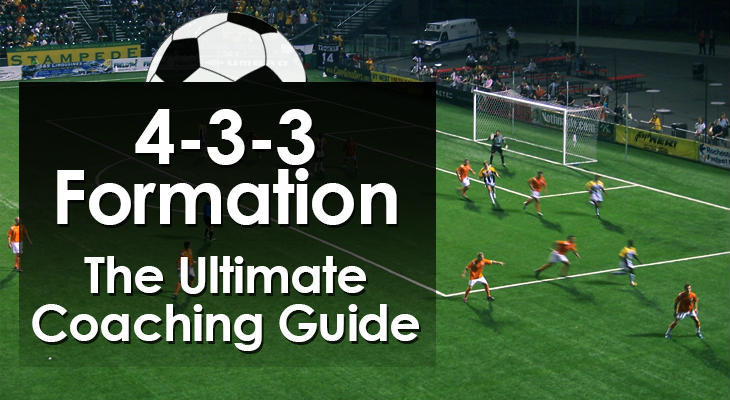4-3-3 Formation – The Ultimate Coaching Guide
4-3-3 is arguably the most popular formation in the game at present.
It’s made up of three key blocks, giving it exceptional balance, width, and solidity.
Most importantly, the front three provides significant firepower, ensuring your team can do the most important thing on the field: score goals.
The midfield three is a staple of the modern game and puts you in the perfect spot to dominate the business area of the pitch.
It gives coaches flexibility with how they set up this trio and often tailor the shape according to a specific game plan.
Depending on the opposition, you can opt for a defensive three with two defensive midfielders (CDMs), a balanced three with a tight cluster, or a more attacking trio with two center attacking midfielders (CAMs).
Regardless of the midfield selection, the flat-back four offers simplicity and solidity in the backline.
Tactically flexible, the 4-3-3 formation not only allows you to plan for each match, but it also makes in-game changes seamless.
Below, I take a deep dive into this popular tactical shape, giving you all the tools you need to implement it successfully.
What is a 4-3-3 Formation?
The 4-3-3 formation is relatively straightforward, especially when it comes to the defenders and forwards.
Complications generally only arise in the midfield areas, where coaches have the liberty of choosing a variety of setups.
A traditional 4-3-3 consists of a standard back four of two center backs and two fullbacks.
The midfield trio is positioned centrally and is usually made up of one defensive-minded player and two box-to-box style midfielders.
However, you can experiment with these players, depending on your tactical approach.
I’ll discuss this in more detail a little later.
Leading the attack, you have a single striker, flanked by a left and right winger.
The front three is responsible for the lion’s share of the team’s goals so you’ll need creative, skillful, and clinical players to fill these roles.
With good spacing and plenty of numbers in key areas of the field, this shape suits an attacking team.
Yet still, the midfield three ensures you can set up to dominate in the central third of the field too.
The 4-3-3 formation encourages expansive soccer and is most effective with talented players that are highly capable on the ball.
If your team lacks individual talent, particularly in midfield and on the wings, you may struggle.
However, the 4-3-3 is also quite versatile and allows you to transition into a more familiar or compact shape if needed.
Now, let’s take a closer look at the strengths and weaknesses of the formation.
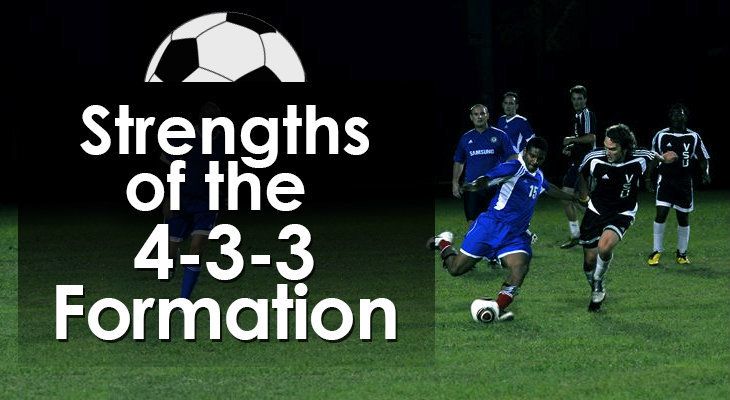
4-3-3 Formation Strengths
#1. Midfield Dominance
Three-player midfields are all the rage in modern soccer.
In a game that was once dominated by 4-4-2 formations, adding an extra player to the middle of the park has effectively finished this type of setup.
The midfield trio ensures you have enough bodies to compete in the crucial midfield battle.
Moreover, it gives you more freedom over the strategy you implement.
Player selection dictates whether you want to protect the backline, control possession, or go all-out attack.
#2. Attacking Firepower
Watching a front-three attack in full flight is a thing of beauty.
Unlike in a 4-4-2 or 4-5-1, the wingers in a 4-3-3 are essentially wide forwards.
Aside from forward pressing and the occasional covering run, these players remain high up the field for the majority of the game.
With this setup, your team always has attacking options available from various angles.
In the modern era, wingers are often the primary goal contributors for their teams, which is a vast shift from previous decades.
#3. Ball Retention
The spacing and balance of the 4-3-3 formation makes it a perfect shape for keeping possession.
With a compact midfield three, your team can make natural triangles all over the field, helping progress the ball seamlessly.
Pep Guardiola’s Barcelona, during the 2010/11 season, famously averaged 72.8% possession using a 4-3-3.
While this team was arguably the greatest club side of all time, it demonstrates what this formation is capable of with the right players.
#4. Tactical Flexibility
If your opponent is finding success against you in this shape, its tactical flexibility allows you to make instant changes.
With a couple of positional switches, you can easily transition into a 4-5-1, 4-2-3-1, or even a 4-4-2.
If you have substitutes available, formation changes are even easier.
Another key advantage of the 4-3-3’s tactical flexibility is in-game transitions.
In defense, you can pull the wingers back to create a broad mid-block.
Going forward, you can commit two midfielders into the final third, allowing you to sustain attacks for long periods.
#5. Suits Modern Pressing Tactics
One of the primary reasons the 4-3-3 has become so popular is its effectiveness when executing a pressing strategy.
The theory behind a front press is that by winning the ball in advanced areas of the field, it’s much easier to create high-percentage goalscoring chances.
To paraphrase, gegenpressing master, Jurgen Klopp, when you regain possession nearer the opponent’s goal, you’re just one or two passes away from scoring, and the defense is out of position.
An effective press can be far more effective than a world-class playmaker.
With three quick forwards up against four more cumbersome defenders, the 4-3-3 is an ideal shape to implement an aggressive press.
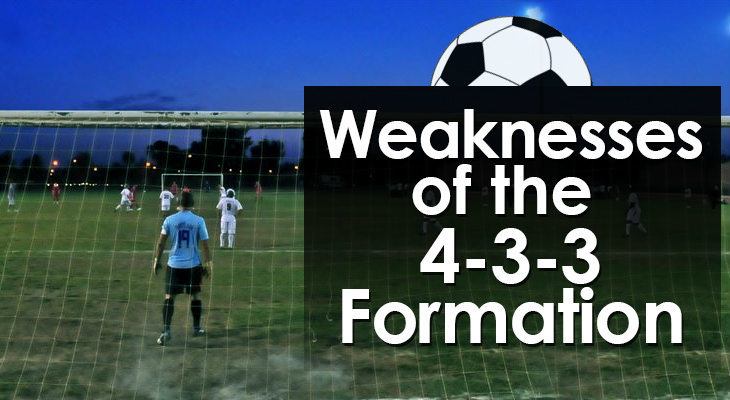
4-3-3 Formation Weaknesses
#1. Defensive Vulnerabilities
As a formation primarily used by attacking teams that like to have the ball, the 4-3-3 naturally has defensive flaws.
This shape is particularly vulnerable during transitions.
Since it commits several players forward in attacking phases, sloppy turnovers often lead to dangerous counterattacks from the opposition.
This is especially true if you push your fullbacks forward.
Slick counter-attacking teams or opponents that enjoy crossfield switches of play can enjoy success against a 4-3-3.
#2. Requires a High Work Rate
Due to the obvious counterattacking vulnerabilities of a 4-3-3 formation, it's imperative that your team is hard working.
Without intensity and work rate in the center midfield positions, the 4-3-3 can be sliced open in transition.
However, it’s also important to note that with diligent and industrious players in your team, you can overcome the defensive issues.
Liverpool’s Champions League-winning team in 2019 is a perfect example of a dominant 4-3-3 side that overwhelmed opponents with tempo, work rate, and of course, skill.
#3. Relies on Quality Midfielders
The midfield bridges the gap between defense and attack and is also responsible for a lot of off-the-ball work.
Successful teams dominate possession in this shape so your midfielders must have technical qualities as well as work rate.
If you have these types of players, then you’re onto a winner.
However, not all coaches benefit from such luxuries.
#4. Teams Can Run Out of Steam
As you can now gather, the 4-3-3 is by no means easy to play in, particularly when it comes to the physical demands.
Unfortunately, some teams run out of steam in the latter portions of the season and simply can’t give what the formation requires.
This fall-off comes in the form of general fatigue, injuries, or a combination of the two.
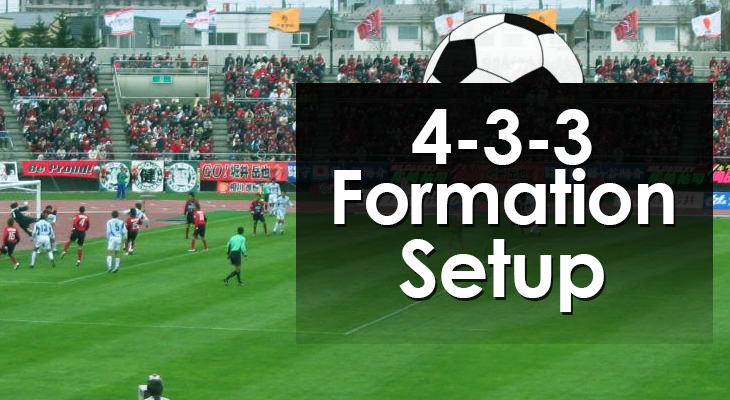
How to Play the 4-3-3 Formation
If you’re looking for a formation that suits fluid, attacking soccer, then the 4-3-3 is a great option.
With talented midfielders and creative attackers, you’re sure to find success with it.
Now, here’s a look at how it works.
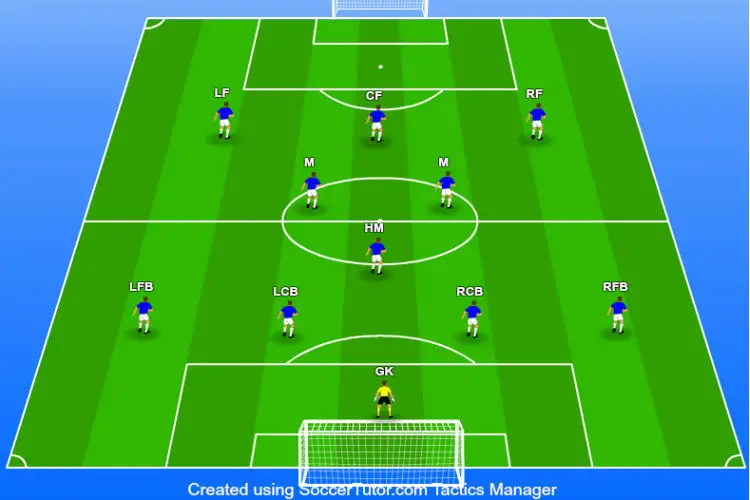
4-3-3 Formation Setup
On paper, the 4-3-3 formation is easy to digest.
It has three core banks of players, in defense, midfield, and attack:
Flat-back four of two center backs and two fullbacks
Center midfield three (can be set up in a variety of ways)
Attacking three of two wingers and a striker
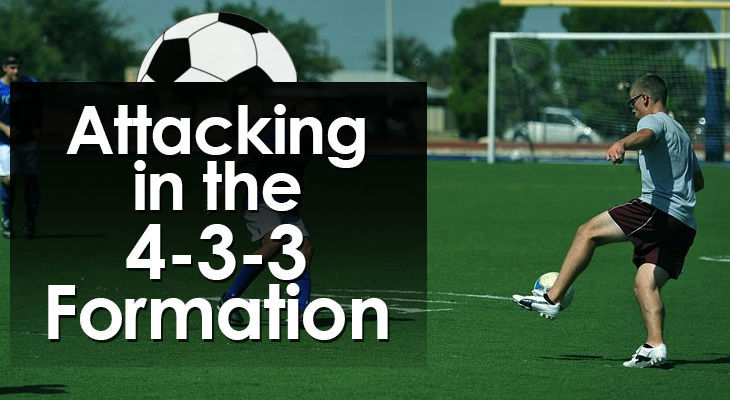
Attacking in the 4-3-3 Formation
Naturally, the 4-3-3 formation sets your team up to attack.
With three midfielders and three forwards, there are always plenty of numbers in the middle and final thirds.
To boot, there is also significant natural width and if the fullbacks join in with the offense, you can run opponents ragged.
Now, let’s focus on three core attacking principles for attacking with fluidity in a 4-3-3.
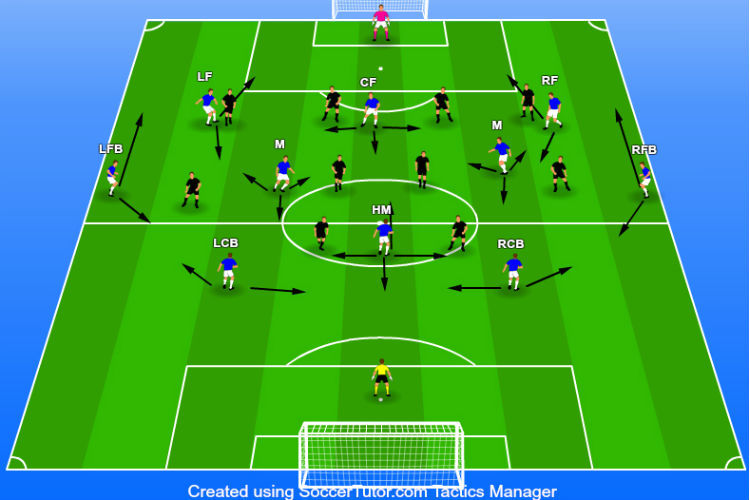
1. Look for Numerical Overloads
The key to success in this shape is to create numerical overloads and mismatches all over the field.
Firstly, this should occur through the midfield.
The most common way to set out your central midfielders is with a defensive-minded player at the base and two box-to-box players on either side (slightly ahead).
This creates passing triangles that allow you to pass around opposing players.
Midfielders should work in tight spaces, isolating opponents before passing around them.
The striker can also drop deep to get involved in the buildup.
This pulls defenders out of position, leaving space for deep runs from midfield or central angular runs from the wingers.
Numerical overloads can also be created on the wings if the fullbacks get forward.
2. Play at a High Tempo
In possession, teams in a 4-3-3 can really dominate by playing at a high tempo.
With two banks of three in the final third, quick passing, give-and-goes, and switches of play are highly effective.
Moving the ball from one side to the other not only tires out your opponents, but it also pulls them out of position.
Once gaps open up, your team should be ready to play the killer pass.
Playing at a high tempo also relates to counterattacking.
With a three-player forward line, the 4-3-3 allows you to break quickly, hitting opponents on the counter in a devastating fashion.
3. Push Fullbacks Forward
One of the most common counter-strategies to this formation is a low block.
Essentially, this means keeping a deep defensive line close to the goal and dragging as many players as possible behind the ball.
With so many players in defensive positions, low blocks can be difficult to break down, especially through central areas.
Therefore, you must increase your offensive presence on the wings.
In such scenarios, instruct your fullbacks to push forward and double up with the wingers.
This creates numerical overloads, forces opponents out of position, and creates openings in a low block.
Overlapping and underlapping runs help make space behind the defensive line while quick give-and-goes can open up both shooting and crossing opportunities.
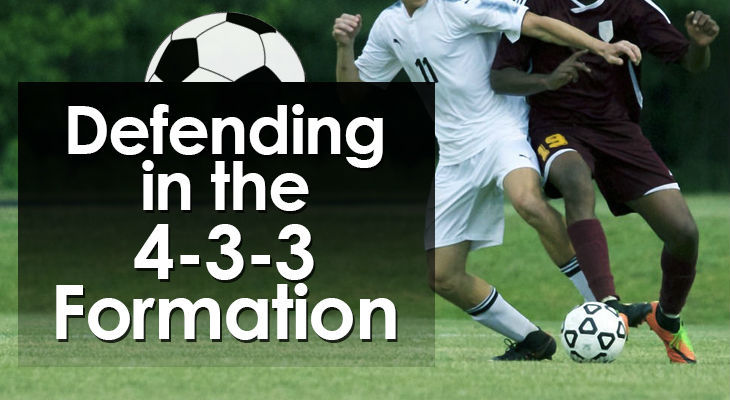
Defending in the 4-3-3 Formation
As I discussed earlier, the 4-3-3 formation has its share of defensive vulnerabilities.
Yet still, with the right players and tactics, your opponents will think they’re facing a 12-player team.
As long as your team is fit and willing to work hard, there’s no reason you can’t be defensively sound in a 4-3-3.
Here are three key focus areas for defending in this shape.
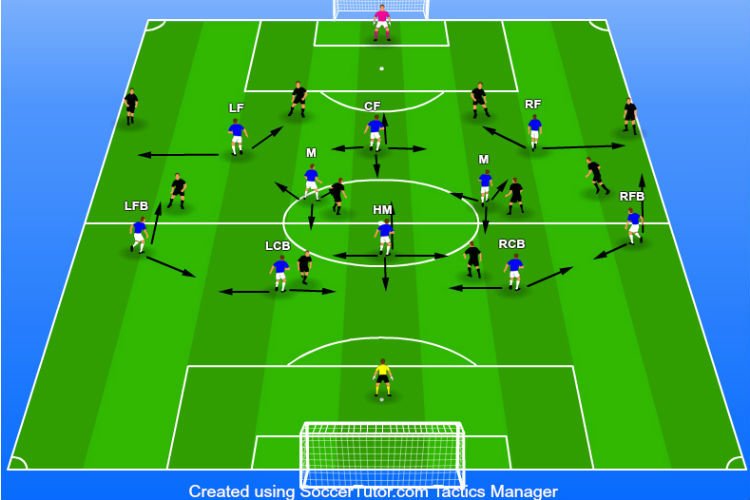
1. Press from the Front
With a three-player front line, the 4-3-3 is perfect for a high press.
While there are plenty of nuanced ways to press, the most basic strategy is to trigger the press after a certain action.
Usually, this is when the “weakest” ball player in the defense gets the ball or when a fullback receives possession.
When this occurs, the player closest to the ball engages the opponent, while the other two swarm and block off passing lanes.
The midfield trio should cover any central passes, forcing the defender into a long ball or a turnover.
During the high press, your defenders should stay compact and ensure there are no obvious gaps for a long ball pass.
2. Maintain a High Defensive Line
Playing a high defensive line poses a risk-reward scenario.
The main risk is that precision passers and pacey forwards can get in behind.
However, with a well-organized backline and industrious midfield, opening up the defense is no easy feat.
The reward for playing a high defensive line is that it mitigates the obvious weaknesses of the 4-3-3: counterattacks, transitions, and switches of play.
With minimal space between the midfield and defensive lines, the only clear avenue for your opponents is over the top.
If you have quick and competent defenders, handling these types of scenarios shouldn’t be a problem, more often than not.
3. Protect the Fullbacks
The fullbacks are the most isolated players in a 4-3-3, at least from a defensive standpoint.
Moreover, if they get forward frequently, they’ll leave a lot of space behind them for the opposition to exploit.
Therefore, you must ensure they have adequate protection and cover.
In 1v1 or 2v1 situations, the fullback should receive cover from the midfielder on their side or their winger.
When they get forward, the midfield three should open up and spread across the field.
This allows for quick and seamless switches of play and ensures the left and right-sided center midfielders can cover the spaces behind the fullbacks.
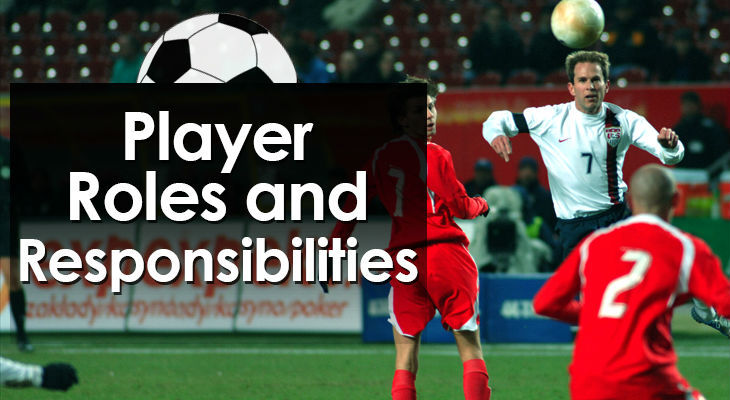
Individual Position Responsibilities
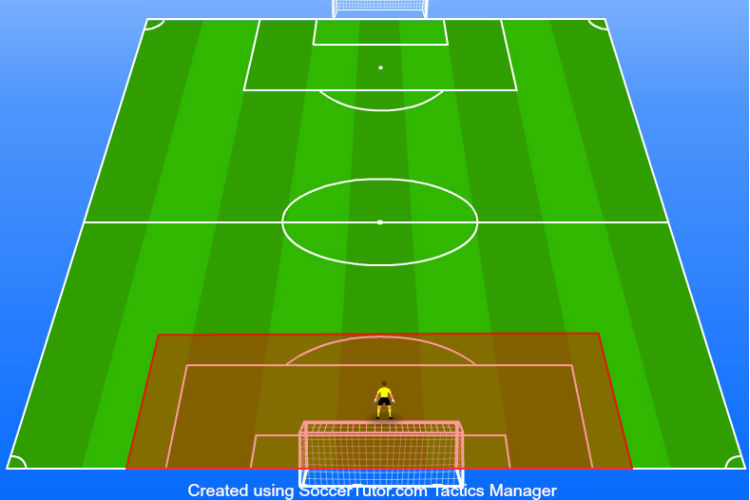
Goalkeeper
If you follow the defensive principles outlined above, your team will benefit from a goalkeeper with ball-playing abilities.
When a team operates with a high defensive line, the goalie must be a sweeper, cleaning up long balls and over-the-top passes.
The likes of Alisson Becker (Liverpool) and Manuel Neuer (Bayern Munich) are immense sweeper keepers and allow their teams to press high and play with aggression.
Furthermore, their distribution skills mean they can be used in buildup phases to recycle possession or beat a high press.
Naturally, shot-stopping and reliability under crosses are also important for a goalkeeper.
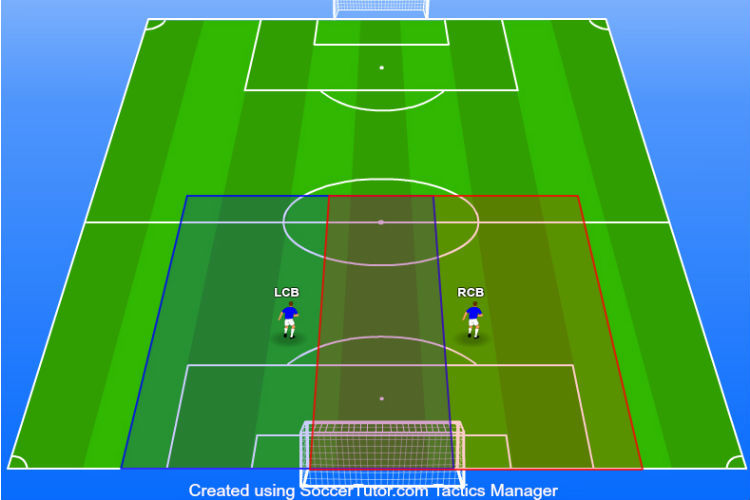
Center Backs
With less protection than in many modern formations, center backs in a 4-3-3 must display a range of technical qualities.
Strong in the tackle with good positional sense, the center backs must win the physical battle against opposing forwards.
This doesn’t mean rushing out of defense to make a crunching challenge.
Rather, it means having the awareness and timing to be first.
Decision-making and communication skills are also key for top center backs.
They should recognize the opposition’s strengths and communicate with teammates to mitigate them.
If you play with a high line, it’s extremely beneficial to have at least one center back with pace to make recovery runs.
And, since they may face a lot of long balls, they should be aerially dominant.
In a 4-3-3 formation, your center backs are likely to see a lot of the ball so having good ball-playing abilities is also a bonus.
Top center backs can dictate the tempo of the game when their midfielders are struggling to do so.
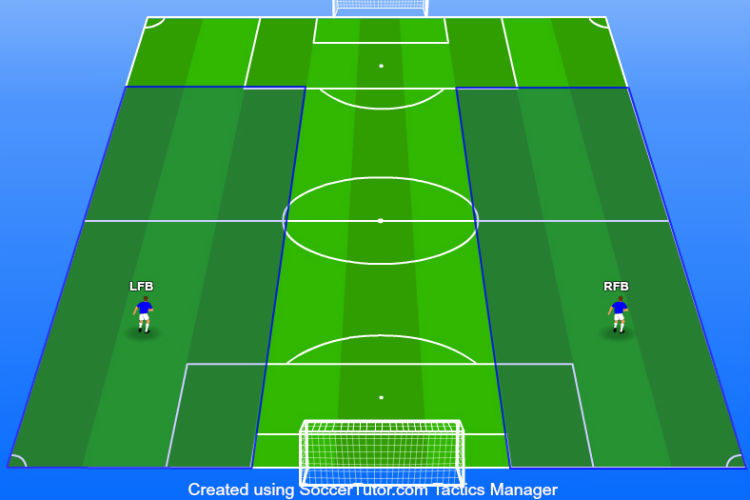
Fullbacks
Having disciplined and hard-working fullbacks is essential in a 4-3-3 formation.
Due to the unique vulnerabilities of this shape, especially during transitions, they’re likely to be involved in the thick of the action every week.
Their defensive duties should be the first priority, even when the ball is on the other side of the field.
Fullbacks in a 4-3-3 can’t afford to ball-watch and must be aware of opponents in their defensive zone; even more so if the opposition decides to double up on the wings.
Their core responsibilities are to mark the opposing winger 1v1, track back in transition, stop crosses, and defend the back post.
Your fullbacks’ positioning must be on point to make sure they get a run on their marker if the ball is switched to the opposite side.
Attacking qualities are an added bonus and can really add some oomph to your offense.
Regardless of your fullbacks’ abilities going forward, basic overlapping and underlapping runs can give the wingers the time and space needed to create.
If they have good striking technique, you’ll have an additional weapon in attack.
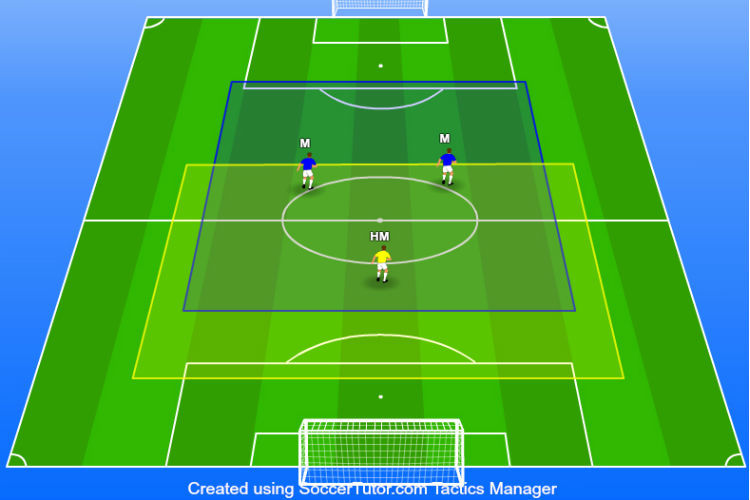
Midfield Trio
When it comes to the engine department, you’ll need a combination of technical skill and work rate.
The midfield is the area that really makes the 4-3-3 formation tick.
There are a number of ways to line up the midfield.
Your choice may depend on the opposition, the personnel available, or the game plan you wish to follow.
One of the trio is usually a specialized holding player, deployed as an anchor to solidify the defense and keep the ball moving in possession.
This player is integral to the success of the formation not only due to their defensive work, but also because of the freedom they provide for their teammates.
They must cover the gaps and passing lanes left by the rest of the team, sniff out danger, cover the fullback positions, and slow down the opposition’s attacks in transition.
As with all midfielders, they need to be good on the ball, calm in possession and as the deepest midfielder, they’re responsible for starting attacks and progressing the ball.
The other two midfield slots can be filled in a variety of ways…
You can go ultra-defensive with another CDM.
However, this doesn’t offer much fluidity going forward.
It’s usually best to line up with two ball-carrying number 8s who can pass and also put in a defensive shift.
If your team lacks a cutting-edge in attack, consider playing with a box-to-box midfielder and a more attack-oriented, creative player.
The box-to-box player will add energy to the defensive phases, while the attacker will help feed the forwards and break down defenses.
Regardless of the individuals you choose, instruct your midfielders to be proactive with and without the ball.
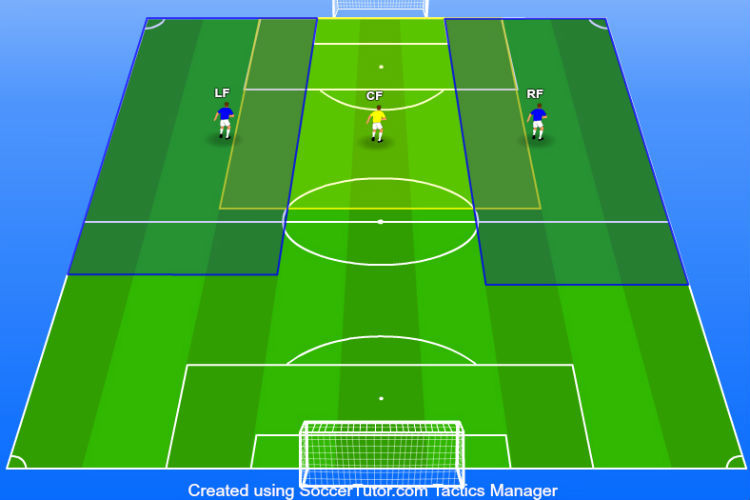
Wingers
Your wingers should be the most skillful and creative players on the team.
They’ll receive the ball in key areas from which they can create chances.
Wingers should be confident in their abilities to beat a defender 1v1 and are often given the responsibility to create chances out of nothing.
That said, in a well-managed team, their fullbacks can help out a lot with dummy runs or as a passing outlet.
If you play with a “target man” style striker, it can be beneficial to position a winger on the same side as their strong foot.
That way, they can go down the outside and swing in crosses from wide areas.
This is generally the easier route as defenders tend to show wingers down the line rather than toward goal.
However, most modern teams play with inverted wingers, especially when they have attacking fullbacks to bomb down the wings.
An inverted winger plays on the opposite side to their dominant foot - for example, a right-footed player on the left wing or a left-footed player on the right.
Playing inverted gives the winger a more dynamic threat as they can cut inside to shoot or play neat one-twos and join more dangerous central attacks.
It’s very important that the winger doesn’t come inside too much, however.
Otherwise, they will limit the space and become too easy to predict.
In the modern era, wingers bear a significant burden for scoring and assisting and must be clinical in the final third.
As I mentioned earlier, the wingers are also key members of a high press, should you decide to implement one.
Striker
The best-in-class striker for a 4-3-3 formation is usually an all-rounder.
They should be comfortable receiving the ball with their back to goal, holding up the play, bringing teammates into the fold, and dribbling directly at defenders.
Furthermore, they must be a threat in behind and use clever movement to get into dangerous areas.
But most importantly, your striker has to be ruthless in front of goal.
As the lone central attacker, they’re responsible for scoring the most amount of goals for the team.
In addition to finishing, your number 9 should have impeccable positioning and know exactly where to be when the ball is in the final third.
World-class strikers live off tap-ins and 1v1s with the goalie.
Being in the right place at the right time is a skill that’s learned from hours of practice on the training field and learning from the best in the business.
If your wingers are particularly dangerous in front of goal, you may also consider playing with a false 9.
Rather than spearheading the 4-3-3, a false 9 drops deep and plays as a facilitator.
Their movement drags defenders into “no man’s land”, opening up spaces for the wingers to run into.
This is quite a nuanced strategy but it can be effective with the right personnel.
How to Beat a 4-3-3 Formation
If you’re tired of being beaten by teams using a 4-3-3, listen up.
There are several effective ways to exploit its weaknesses.
You’ll be glad to hear that these strategies are not too difficult to utilize.
Here are three useful ways to break down a stubborn 4-3-3.
1. Double Up on the Wings
In terms of beating the press and bypassing the midfield, the most effective offensive strategy in a 4-3-3 is to focus on the wide areas.
Play a wide formation that gives you partnerships along the wings, like a 4-4-2 or a 4-5-1.
Rather than trying to play through the press and the dogged midfield, you play around it and focus on exploiting the formation’s weaknesses.
You could also consider a formation that uses three center backs and wingbacks, like a 3-4-3 or a 3-5-2.
Again, this ensures you can match up in midfield and gives you presence on the wings where the 4-3-3 is most susceptible.
2. Strike in Transition
Sometimes, counterattacking tactics are a necessity.
And, unless you match up like for like against a 4-3-3, it’s a viable strategy.
Firstly, you’ll need to ensure defensive stability so you can soak up some pressure.
This means taking minimal risks in defense and deploying an extra defensive midfielder.
Secondly, you’ll need to leave one or two attackers high up the field where possible.
When you turn over possession, look for these players and counterattack with speed and intent.
In general, it's best to counter along the wings as this is where the space will be.
3. Play Long Diagonals
As I mentioned, due to the spacing of the 4-3-3, it’s vulnerable to switches of play.
So, rather than playing methodically through the center of the field, instruct your players to “skip a pass” and look for long diagonals.
This rapid switch of play immediately alters the point of attack and forces the opposition to shift across the field.
Over time, you’ll find that gaps open up and your opponents will begin to tire.
A word of warning, however.
Don’t let your switches of play become predictable.
Otherwise, someone will catch on to the strategy and set a trap.

Conclusion
Attacking at heart, the 4-3-3 formation is a great choice for modern sides.
Reliant on hardworking players and athletic fullbacks, the formation also requires tricky wide forwards who can create a lot of goal-scoring opportunities.
That said, it’s this energy and spacing that generates success.
If you don’t have the right players to fill the roles, the 4-3-3 can be a challenge.
But one thing is for certain: it’s a fun formation that gives players the flexibility and stricture needed to express themselves and play to their potential.
Even if it doesn’t click at first, it’s a shape that’s well worth pursuing in the long run.

